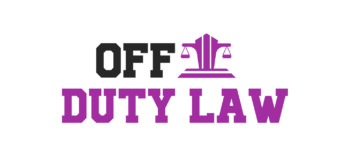Back injuries don’t just ache for a week and go away. In Las Vegas, they’re one of the most frequent consequences of car crashes on I-15, casino slip-and-falls, rideshare incidents, and workplace mishaps, and they can reshape a person’s life. A seasoned Las Vegas back injury lawyer understands how quickly medical costs, time off work, and long-term pain stack up. This guide explains why back injuries are so common, how Nevada law handles fault, what compensation looks like, and why steady, informed legal support, such as from Cameron Law, can make a tangible difference for victims coping with chronic pain.
Back injuries as one of the most common accident outcomes
Back trauma is one of the most reported outcomes after traffic collisions, falls, and sudden-impact events. The spine bears the brunt of force in ways that aren’t always obvious right away, which is why symptoms often peak days after an incident.
Why they happen so often in Las Vegas
- High traffic volume and tourism-driven congestion increase rear-end and sideswipe crashes, which commonly cause whiplash, soft-tissue strains, and disc injuries.
- Casino and resort environments create elevated slip, trip, and fall risks, spills, escalators, polished floors, and crowded walkways.
- Rideshare pickups and drop-offs can produce awkward curbside maneuvers and sudden stops.
- Construction and service jobs that power the local economy involve lifting, ladders, and repetitive stress.
Common back injuries after accidents
- Muscle and ligament strains or sprains
- Herniated or bulging discs (cervical, thoracic, or lumbar)
- Facet joint injuries and radiculopathy (shooting pain, numbness)
- Compression fractures
- Spondylolisthesis or spinal instability
- Post-traumatic arthritis and chronic myofascial pain
Even “minor” crashes can aggravate preexisting degeneration, a common finding on MRIs for adults over 30. Under the eggshell-plaintiff rule, the at-fault party is responsible for the full extent of harm caused or aggravated by the accident, fragile spine and all.
Long-term medical and financial burdens for victims
Back injuries are notorious for lingering. Many victims improve with conservative care, but a significant share develop persistent symptoms that interfere with work, sleep, and daily tasks.
The medical arc
- Acute care: ER or urgent care visits, imaging (X-ray, MRI), meds.
- Conservative treatment: Physical therapy, chiropractic care, acupuncture, home exercises, and anti-inflammatories.
- Interventional pain management: Epidural steroid injections, facet blocks, radiofrequency ablation.
- Surgery (when indicated): Microdiscectomy, laminectomy, fusion, or artificial disc replacement.
- Rehabilitation and maintenance: Ongoing PT, pain management, and periodic flares that require renewed care.
Costs that pile up
- Stacking bills: Imaging, specialist consults, injections, and surgery can run five to six figures.
- Time off work: Missed shifts, reduced hours, job changes, or forced early retirement.
- Diminished earning capacity: Physical restrictions can limit overtime, travel, or manual tasks.
- Daily-life expenses: Transportation to appointments, home modifications, or paid help with childcare and chores.
Nevada is an at-fault state, so liable parties (or their insurers) are responsible for the damages they cause. Many injured people in Las Vegas also use MedPay coverage (optional on auto policies) to help with early medical bills. Health insurers and providers may assert liens or reimbursement rights, which complicates settlement math. A well-organized claim accounts for these moving parts and negotiates them so the net recovery isn’t swallowed by outstanding balances.
Proving liability in back injury lawsuits under Nevada law
Back injury cases turn on evidence. Nevada law requires proof that a defendant was negligent and that this negligence caused the injury.
Core negligence elements
- Duty: Drivers must follow traffic laws: property owners must maintain reasonably safe premises.
- Breach: Speeding, distracted driving, ignoring spills, or poor lighting can constitute a breach.
- Causation: Medical experts connect the incident to the back injury or aggravation of a preexisting condition.
- Damages: Documented medical treatment, wage loss, and pain and suffering.
Comparative negligence and key Nevada rules
- Modified comparative negligence (NRS 41.141): A plaintiff’s recovery is reduced by their percentage of fault. If they are 50% or more at fault, they recover nothing.
- Negligence per se: Traffic citations or safety-code violations can streamline proof of breach.
- Premises liability: “Open and obvious” hazards don’t automatically defeat a claim: they factor into comparative fault. Notice (what the owner knew or should’ve known) is often decisive, and surveillance footage in casinos can be pivotal.
- Statute of limitations: Generally two years from the date of injury for personal injury claims in Nevada. Different timelines can apply in medical malpractice or claims involving government entities.
Evidence that moves the needle
- Scene evidence: Photos, 911 audio, crash reports, EDR/”black box” data, and witness statements.
- Property records: Incident reports and video from casinos, hotels, or retailers.
- Medical documentation: ER notes, MRI findings, treatment plans, and consistent symptom reporting.
- Work and pay data: Timesheets, HR letters, tax returns, and vocational assessments to establish wage loss and future capacity.
Spoliation letters sent promptly can help preserve video and maintenance logs, critical in Las Vegas properties where footage cycles quickly. A Las Vegas Back Injury Lawyer coordinates this early, targeted evidence work so causation and fault aren’t left to speculation.
Compensation categories for treatment and lost income
Compensation aims to make victims whole, covering both what’s already happened and what’s likely ahead. In Nevada, recoverable damages typically include:
Economic damages
- Past medical bills and related travel costs
- Future medical care (injections, surgery, rehab, medications)
- Medical devices and home modifications
- Past lost wages and benefits
- Reduced future earning capacity (supported by medical and vocational opinions)
- Household services (hiring help for tasks the injury prevents)
Non-economic damages
- Pain and suffering (including flare-ups and limitations)
- Loss of enjoyment of life (missed activities, hobbies, family moments)
- Emotional distress (anxiety, sleep disruption, depression linked to chronic pain)
Punitive damages
Punitive damages may be available for egregious conduct (like extreme intoxication): Nevada generally caps punitive awards under NRS 42.005, with limited statutory exceptions.
Nevada’s collateral source rule usually prevents a defendant from reducing liability because insurance helped pay bills. That said, insurers and medical providers can assert liens or subrogation rights, so settlement allocations and lien negotiations matter. For serious cases, life-care planners and economists model future costs and wage loss. Structured settlements may help manage long-term medical expenses and protect benefits. A knowledgeable Las Vegas back injury lawyer keeps these financial mechanics front and center, aiming for a net recovery that aligns with real-world needs.











